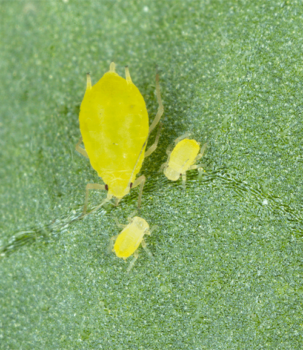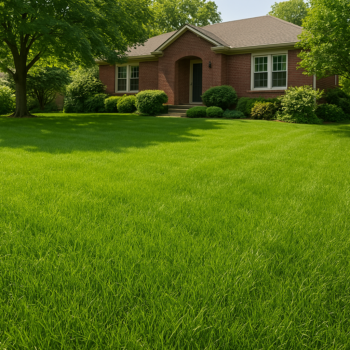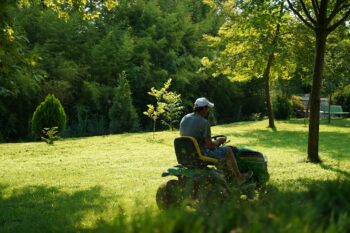Trees and shrubs are vulnerable to all three kinds of harm-causing insects found in the yard and garden: sucking insects, chewing insects, and those that bore into the wood. Each of these can damage the plant by stealing both water and nutrients, compromising its structure, and rendering the organism more vulnerable to diseases.
Sucking and chewing insects, often those in the larval stage of development (but not always), tend to attack a plant’s leaves and stems.

Common sucking and chewing insects:
- Bagworms
- Aphids
- Cankerworms
- Caterpillars
Our Insect Control service page has additional information about these garden pests.
Boring Insects
Boring insects (typically adults), will create holes in the bark of trees, and in the branches of both trees and woody shrubs. Many of them will bore holes large enough to make into a home, which further weakens the structure of the branch or trunk they’ve drilled into.
The unhealthier a tree or shrub is, the greater its chances of becoming a target for boring insects. This is largely because the withering organic matter is simply easier for them to break down. However, even thriving vegetation can still fall prey to an infestation.
Primary Invaders
Primary invaders, which typically include a variety of moths and beetles (among others), can still cause significant damage. A once-healthy tree or shrub may eventually perish if an invasion of boring insects goes unchecked.
Cambium is the inner layer of a branch or trunk that is responsible for carrying nutrients throughout the plant. Once this layer has been penetrated, the plant’s vitality will suffer, and it may begin dying above the point(s) where the insects have bore into it.
Secondary Invaders
Termites, carpenter ants, carpenter bees, and other “secondary invaders” are most likely to attack a plant that is already sick. Hence the term, their invasion is secondary to an underlying issue. Their presence is a direct indicator of a pre-existing malady.(Example: termites taking up residence in a rotting wooden fence post.)
Many insects feed and make their homes in the bark, trunks and branches of shade trees and shrubs in Texas. Insect borers belong to several different insect groups including a variety of beetles, moths and horntail wasps.
Telltale Signs
Frass, the dust-like excrement of a boring insect, is the tell-tale sign that the damage has been done by a bug rather than a woodpecker. Additionally, the holes made by boring insects tend to be less patterened than those of a woodpecker. If the homeowner isn’t sure what’s gotten into their trees and shrubs, these are what to look out for.
Ryno Lawn Care, LLC has a variety of treatment methods- both active and preventive- to eradicate all forms of destructive insects found in your trees and shrubs.




